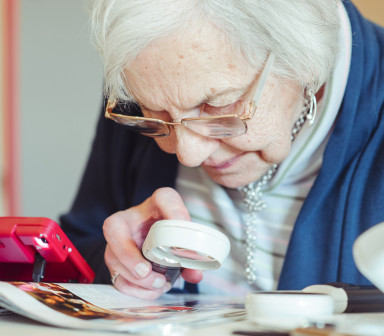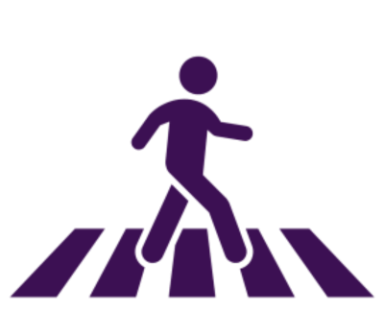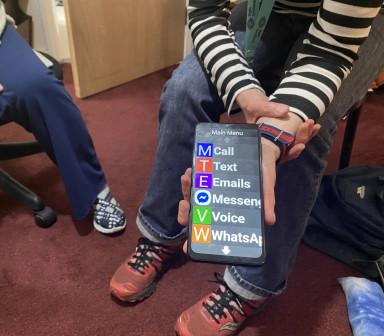In our latest blog, Sight Scotland Veterans Lead Rehabilitation Officer, Sandra Taylor, shares five key things to know about using handheld magnifiers for people with sight loss or a visual impairment.

Positioning and task lighting
Creating a suitable and comfortable setting when using a magnifier is really key, so first make sure you are sitting in a supported and comfortable position. Some people find using a tilt table or clip board helpful.
Use task lighting where you can and make sure the light is directed on to the reading material and not into your face. This helps to control and reduce glare, and makes reading easier.
Maintain your distance
Make sure you are the correct, and a comfortable, distance from the page or material you are looking at, and hold the magnifier parallel to the reading material.
Keeping the magnifier a set distance from your nose and from the reading material is good practice, and this distance will change with the strength of the magnifier. The stronger the lens, the closer everything is to the reading material.
Keeping track of the next line
If you're having difficulty finding the beginning of the next line while using a magnifier, keep your thumb on the line you are reading and track backwards to the beginning of the line you just read, before moving down to the next line.
Upside down images
If images are appearing upside down, this means that the magnifier and print are too far away. To correct this, slowly bring them both closer to your eye until the image rights itself.
If you have switched to a stronger magnifier, you may need to hold it closer to your face.
Keep your magnifiers clean
It's really important to keep your magnifiers clean for best optimal use.
To clean a magnifier, use a soft, lint-free cloth rather than tissues, to carefully wipe it down. If you wear glasses, ensure these are kept clean as well!
For magnifiers with batteries, you also should not store these for long periods of time without removing the batteries.
Our Rehabilitation Teams
Our Rehabilitation Teams carry out low vision assessments and provide handheld magnifiers as well as other magnification equipment and lighting.
We also support people to learn or re-gain essential living skills following a diagnosis of sight loss.


